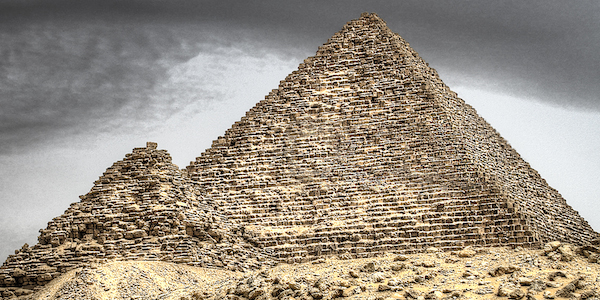 Those of us who are engaged the Restoration Movement are opposed to all man-made creeds and manuals for religion. Instead, we beg our friends and neighbors to return to simple obedience to the Bible and nothing else. Some have objected to the Restoration by saying something like this: “Creeds are actually good. Everybody in Christendom believes in what the creeds teach anyway. Subscribing to the authority of a creed is just a way for us to emphasize certain things we believe and remind ourselves of them.” ((See “Why We Need Creeds,” http://www.beliefnet.com/Faiths/Christianity/2003/09/Why-We-Need-Creeds.aspx. A stronger position is that we actually need extra-biblical creeds and cannot in practice avoid them (e.g., Rousas John Rushdoony, The Foundations of Social Order: Studies in the Creeds and Councils of the Early Church, 3rd ed. [Vallecito: Ross House, 1998]). I plan to deal with this position directly in a later article).))
Those of us who are engaged the Restoration Movement are opposed to all man-made creeds and manuals for religion. Instead, we beg our friends and neighbors to return to simple obedience to the Bible and nothing else. Some have objected to the Restoration by saying something like this: “Creeds are actually good. Everybody in Christendom believes in what the creeds teach anyway. Subscribing to the authority of a creed is just a way for us to emphasize certain things we believe and remind ourselves of them.” ((See “Why We Need Creeds,” http://www.beliefnet.com/Faiths/Christianity/2003/09/Why-We-Need-Creeds.aspx. A stronger position is that we actually need extra-biblical creeds and cannot in practice avoid them (e.g., Rousas John Rushdoony, The Foundations of Social Order: Studies in the Creeds and Councils of the Early Church, 3rd ed. [Vallecito: Ross House, 1998]). I plan to deal with this position directly in a later article).))
Beside the obvious problem that not everybody does agree with what all of the creeds say, there is the “pyramid” problem, which G.K. Wallace described in his Lectures on Denominational Dogmas (Nashville: Gospel Advocate, 1956):
[M]en like Barton W. Stone, Alexander Campbell, and others began an effort to restore the true church. They said, if there ever was a church in existence as found in the Bible, why cannot men leave the existing doctrines of men and go all the way back to the true pattern and restore the church that Jesus said, ‘I will build?’ They set out to restore the church in organization, doctrine, and practice. The word of God is the pattern that directs us how to become a Christian and how to live a Christian. The word of God had been buried under the perversions of Romanism and by Protestant and Catholic creeds. The first human creed was made probably about A.D. 325. This creed was placed over the Bible. The Bible had to be studied in light of the creed. Then men wrote another creed to explain the creed that explained the Bible and placed it on top of this first creed. This last creed was not sufficiently clear; so they wrote a creed to explain the creed that explained the creed that explained the Bible and put it on top of all creeds and the Bible. So these creeds built up like a pyramid, until some churches today have a half-dozen creeds, or else the creed that they use is a culmination or compilation of all the various creeds that have been written by men, starting with that fabrication known as the “Apostles Creed” ((Wallace calls it a fabrication because the actual Apostles had nothing to do with the so-called “Apostles’ Creed”.)) (sic.) and carrying all the way down through the years. Campbell and others began to reason like this: “Let us take away these creeds one by one. Let us put them aside, all of them, and go all the way back to the days of the apostles for our pattern of worship. Let us take no book but the Bible, no creed but Christ, no name but the divine name and preach just as they preached in the days past and gone.” ((139-140.))
In this statement, Wallace describes both the fundamental philosophical problem with creeds and a practical problem with them. The philosophical problem is that when religious creeds are adopted, they unavoidably are uavoidably given precedence over the Scriptures. The practical problem is that creeds, because they are manmade, lead unavoidably to more creeds, which breeds confusion and sectarian division.